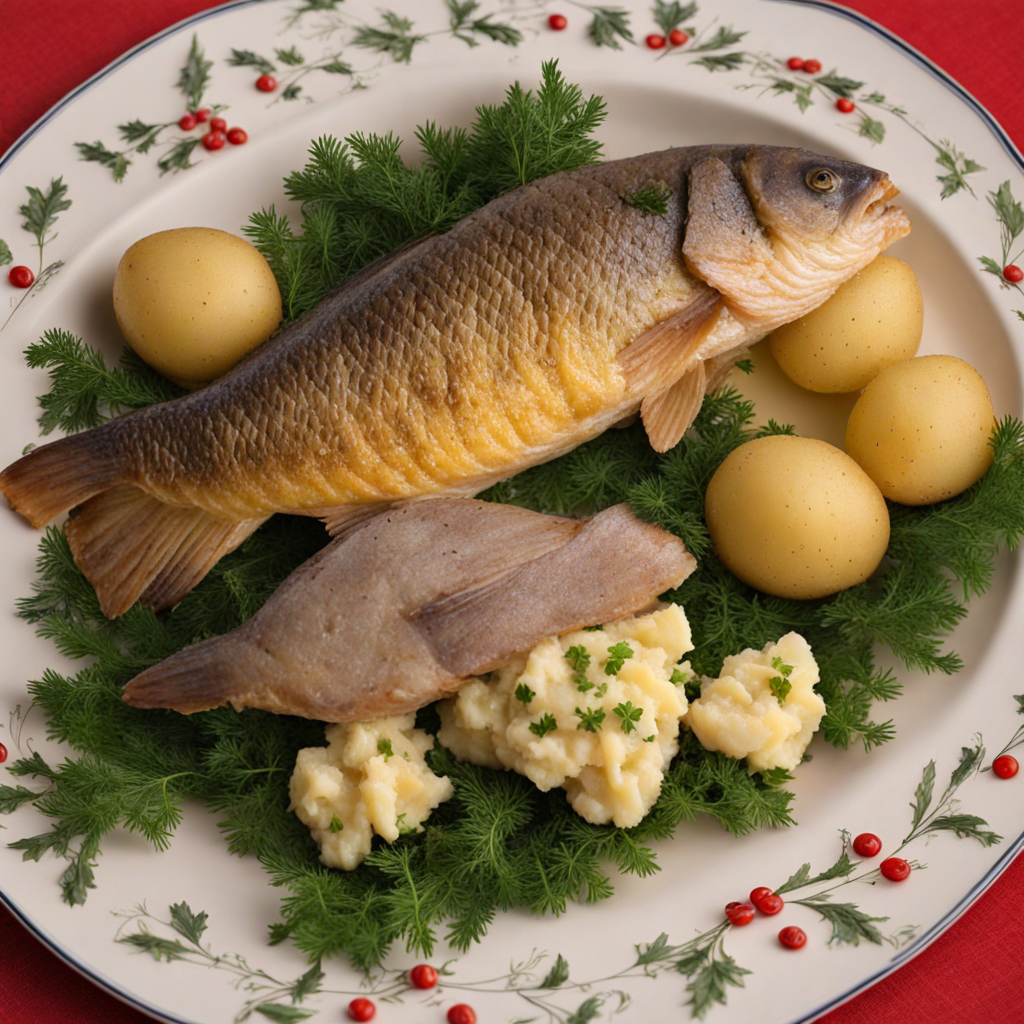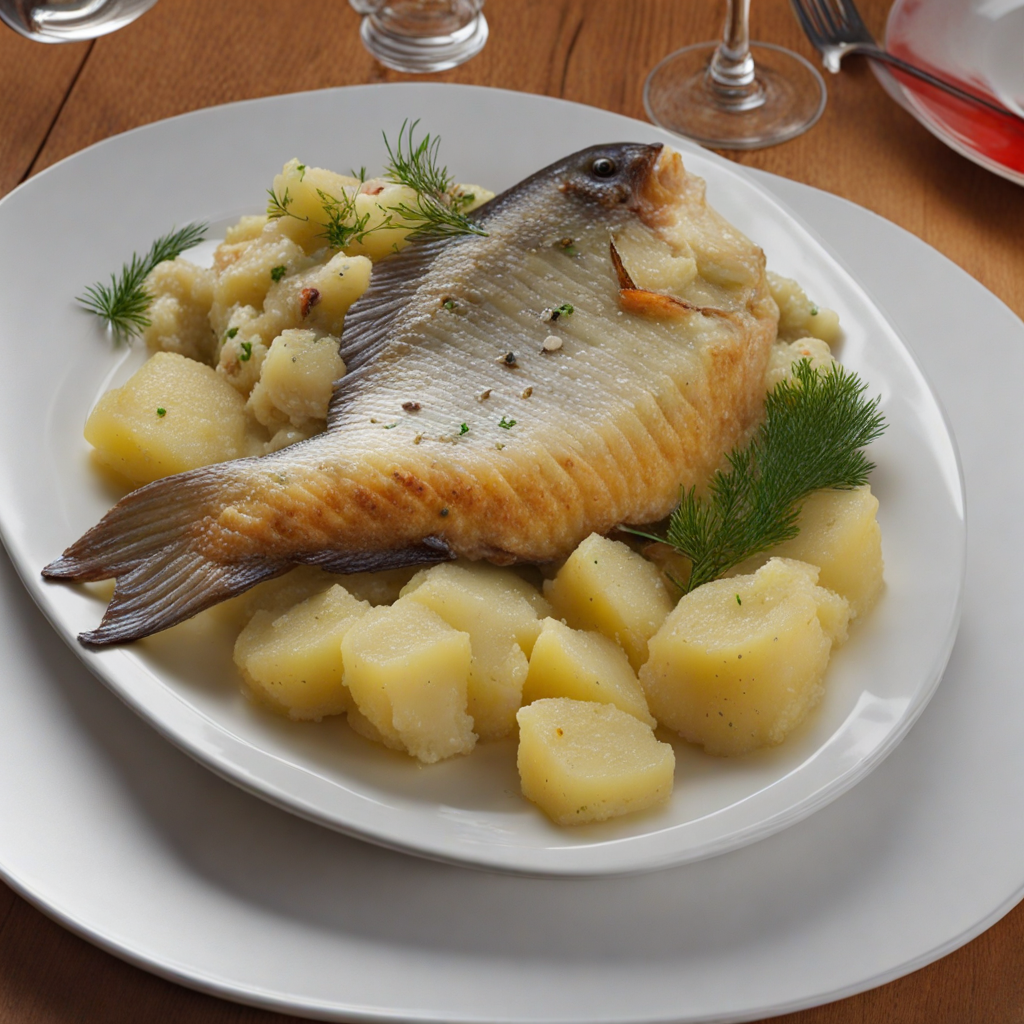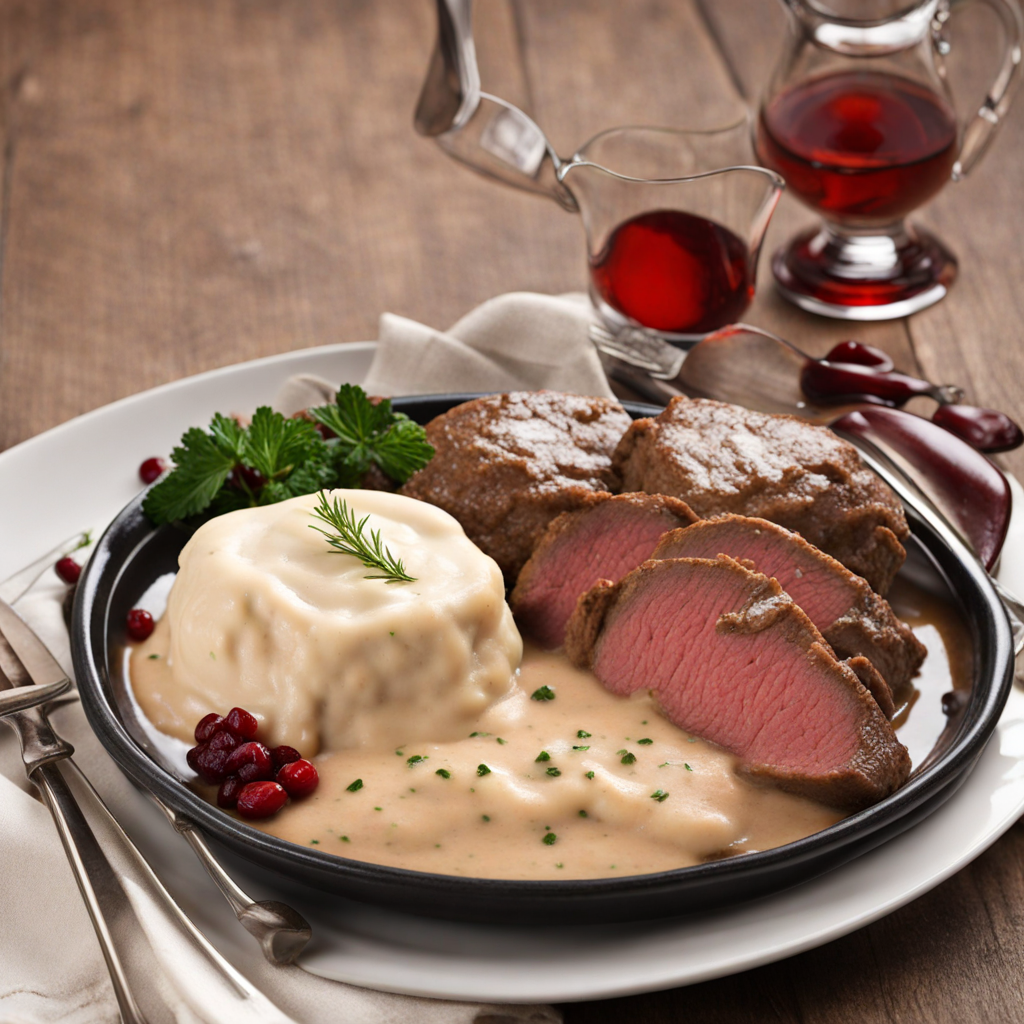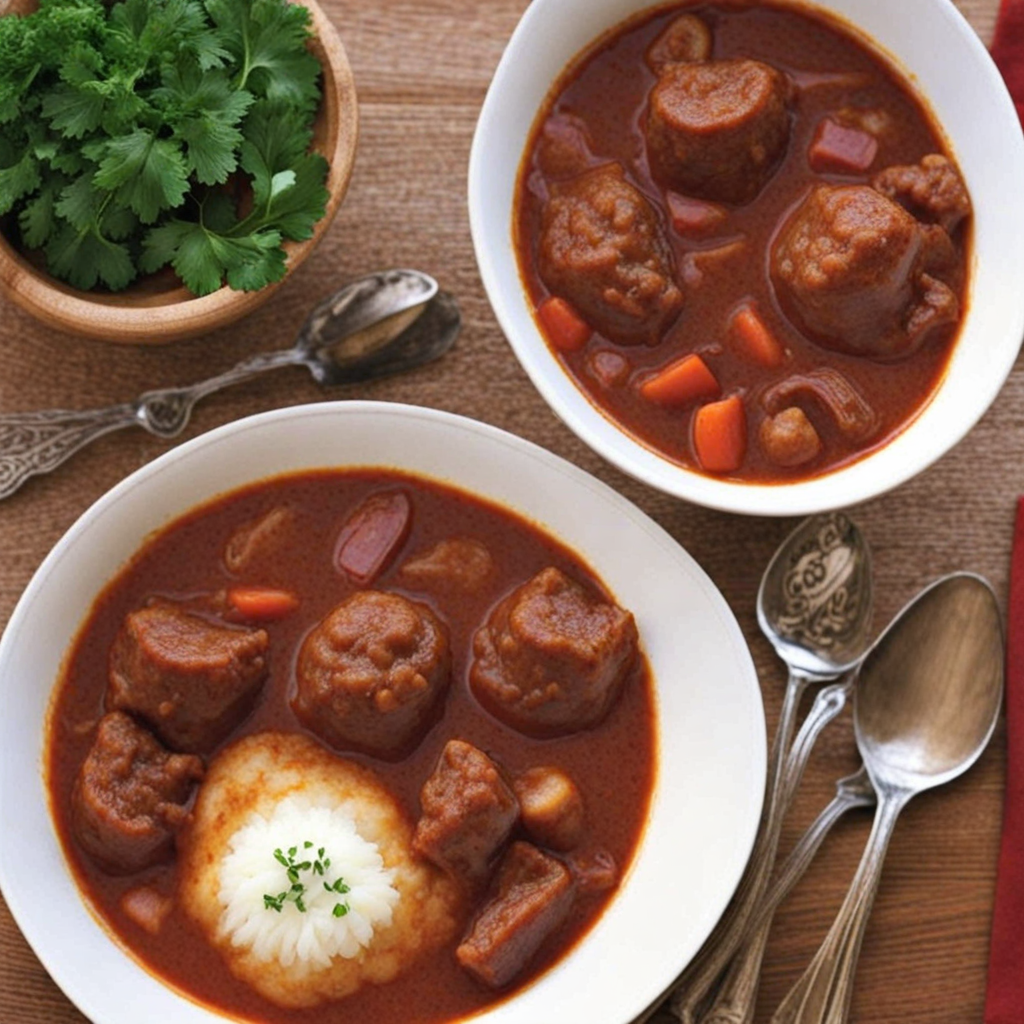Carp and Potato Salad
Carp and Potato Salad is a traditional Czech dish that beautifully combines the delicate flavors of fresh carp with the heartiness of boiled potatoes. The carp, typically marinated or lightly seasoned, is either baked or fried to bring out its mild, sweet taste. The fish is often complemented by a variety of spices and herbs that enhance its natural flavor, creating a dish that is both rich and satisfying. The preparation highlights the freshness of the carp, which is a popular choice during festive seasons, particularly around Christmas in the Czech Republic. Accompanying the carp is a creamy potato salad that adds a delightful contrast in texture and taste. The potatoes are boiled until tender and then mixed with ingredients such as mayonnaise, mustard, onions, and pickles, resulting in a tangy and creamy side that pairs perfectly with the fish. The salad is often garnished with fresh herbs, giving it an inviting appearance and a burst of freshness that complements the richness of the carp. This dish is not just about flavor; it's also about tradition and celebration. Carp and Potato Salad is often served during family gatherings and holidays, bringing people together to enjoy the comforting tastes of home-cooked meals. The combination of the tender fish and the zesty salad evokes a sense of nostalgia and warmth, making it a cherished part of Czech culinary heritage. For those looking to explore new flavors, Carp and Potato Salad offers a unique blend of tastes that reflects the heart and soul of Czech cuisine.
How It Became This Dish
Kapr a Bramborový Salát: A Culinary Tradition of the Czech Republic The Czech Republic, a country steeped in rich history and vibrant culture, boasts a diverse culinary heritage that reflects its geographical location at the crossroads of Central Europe. One of the most beloved dishes in Czech cuisine is "kapr a bramborový salát," or carp with potato salad, which has become synonymous with Christmas celebrations. This dish tells a unique story of tradition, adaptation, and cultural significance that spans centuries. Origins of Carp in Czech Cuisine The history of carp in the Czech Republic can be traced back to the Middle Ages. During this period, fish consumption was regulated by the Catholic Church, particularly during Lent and on holy days when meat was prohibited. As a result, carp became a staple fish in many Central European countries, including the Czech lands. The fish was relatively easy to farm and was often raised in ponds, which were plentiful in the region. This led to the establishment of carp farming as an important economic activity. By the 16th century, carp had become a popular dish among the Czech nobility and was featured at lavish banquets. The fish was often prepared in various ways, including smoking or frying, but it was the tradition of serving it with potato salad that would become a hallmark of Czech culinary identity. The Emergence of Potato Salad Potato salad, or "bramborový salát," has roots that extend beyond the Czech Republic, with variations found throughout Europe. The introduction of the potato to Europe in the 16th century, following its arrival from the Americas, transformed culinary practices. It quickly became a staple food due to its versatility and nutritional value. In the Czech Republic, potato salad evolved as a festive dish that was often served during holidays and special occasions. The traditional Czech version typically features boiled potatoes, carrots, onions, pickles, and a creamy dressing made from mayonnaise or sour cream. The dish is often garnished with boiled eggs and sometimes includes peas or apples for added flavor and texture. The combination of carp and potato salad likely emerged in the 19th century, becoming a popular meal during Christmas celebrations. The pairing of these two dishes reflects a harmonious balance of flavors: the rich, tender carp complements the creamy, tangy potato salad, creating a satisfying meal that is both festive and comforting. Cultural Significance Kapr a bramborový salát is not just a meal; it is a symbol of Czech culture and tradition. The dish is closely associated with Christmas Eve, known as "Štědrý den," when families gather to celebrate. In Czech households, the preparation of the meal begins days in advance, with carp often bought live from local fish markets. Many families have their own rituals and customs surrounding the preparation of the fish, which may include cleaning and scaling it together, fostering a sense of unity and anticipation. On Christmas Eve, it is customary to serve kapr a bramborový salát as the main course. The meal is typically preceded by a light soup, such as fish soup or mushroom soup, and followed by sweet pastries and desserts, including the traditional "vánočka," a braided bread. The dining experience is not just about the food but also about the gathering of family and friends, sharing stories, and passing down traditions from generation to generation. In addition to its role in Christmas celebrations, kapr a bramborový salát embodies the Czech philosophy of enjoying simple, wholesome ingredients that reflect the agricultural heritage of the region. The dish is a testament to the Czech people's ability to transform humble ingredients into something special and meaningful. Development Over Time As the Czech Republic navigated through various historical changes, including the Austro-Hungarian Empire, two World Wars, and the Communist era, the significance of kapr a bramborový salát remained steadfast. However, the preparation and consumption of the dish have evolved in response to societal changes and globalization. In the post-World War II period, the availability of ingredients and the methods of preparation began to shift. The rise of convenience foods and the changing pace of life led to adaptations in traditional recipes. While many families still adhere to the classic preparation methods, some now opt for pre-prepared potato salad or frozen carp to save time. Despite these changes, the essence of kapr a bramborový salát persists. In recent years, there has been a resurgence of interest in traditional Czech cuisine, with chefs and home cooks alike seeking to revive and preserve these culinary customs. As a result, many restaurants now feature the dish on their menus, often accompanied by a modern twist, such as incorporating local herbs, spices, or innovative presentation techniques. Additionally, the rise of food tourism has drawn attention to the Czech Republic's culinary heritage, with travelers eager to experience authentic local dishes. This has further solidified the status of kapr a bramborový salát as a must-try dish for anyone wishing to understand the culture and traditions of the Czech people. Conclusion Kapr a bramborový salát is more than just a festive meal; it is a cherished symbol of Czech identity and cultural heritage. Its origins in medieval fish farming, evolution alongside the potato, and deep-rooted significance during Christmas celebrations reflect the resilience and adaptability of Czech culinary traditions. As families continue to gather around the table to share this beloved dish, they not only savor its flavors but also honor the history and values it represents. In a rapidly changing world, kapr a bramborový salát remains a delicious link to the past, connecting generations through the shared experience of food and family.
You may like
Discover local flavors from Czech Republic







